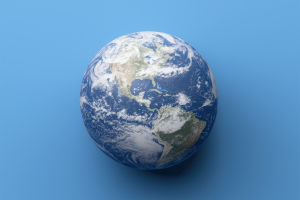How Icebergs Formed?
Dear Lykkers! Icebergs are one of nature's most awe-inspiring creations, often seen as giant, floating mountains of ice.
However, beyond their majestic beauty lies a fascinating formation process and significant impacts and hazards. Let's dive into how icebergs are formed and the role they play in our environment.
Formation of Icebergs: The Birth of a Giant
Icebergs are formed when large chunks of ice break off from glaciers or ice shelves. This process, known as "calving," typically occurs in polar regions like Antarctica and Greenland.
Glaciers and Ice Shelves: Icebergs originate from glaciers, which are massive ice formations that build up over centuries as snow compacts into solid ice. In some cases, they also break off from ice shelves, which are floating extensions of glaciers.
Calving Process: As the glaciers or ice shelves move toward the ocean, the force of water, temperature changes, and pressure causes pieces of ice to crack and break away, eventually forming icebergs.
Floating in the Ocean: Once they separate from the main glacier, icebergs float in the ocean. Since only about 10% of an iceberg’s mass is visible above water, the majority remains hidden beneath the surface, making them quite dangerous for ships.
Impact of Icebergs: More Than Just Ice
Icebergs, while often solitary giants in the ocean, play a significant role in global ecosystems and weather patterns.
Ocean Circulation: As icebergs melt, they release freshwater into the ocean, impacting ocean salinity and circulation patterns. This can lead to changes in global currents and may influence climate systems.
Impact on Marine Life: Icebergs can create new habitats for marine organisms. When they break apart, they release essential nutrients into the water, attracting small organisms like plankton, which, in turn, support the entire marine food chain.
Rising Sea Levels: Melting icebergs contribute to rising sea levels, although their impact is indirect. Since they are already floating, they don't add to the volume of water. However, their parent glaciers, which originate on land, do contribute to sea level rise when they lose ice mass.
Hazards of Icebergs: Risks Below the Surface
Icebergs may look peaceful, but they pose several significant hazards to ships, oil rigs, and coastal communities.
Navigational Hazards: Icebergs have long been a threat to ships. The most famous iceberg-related disaster is the sinking of the Titanic in 1912. Since most of an iceberg is submerged, it is difficult for ships to detect their full size, increasing the risk of collisions.
Damage to Oil Rigs: Icebergs can collide with offshore oil platforms and drilling rigs, causing damage to infrastructure. Special systems and monitoring are often in place in regions prone to icebergs to avoid such collisions.
Coastal Erosion: Large icebergs can cause significant coastal erosion when they drift close to shore. As they melt and break apart, they generate powerful waves that can erode coastlines and alter ecosystems.
Icebergs are majestic yet dangerous creations of nature. Their formation is a fascinating process driven by the movements of glaciers and ice shelves. While they support marine life and impact ocean circulation, they also pose hazards to ships and coastal environments. As climate change accelerates the rate of iceberg calving and melting, understanding their formation and impact becomes even more critical in mitigating future risks.


